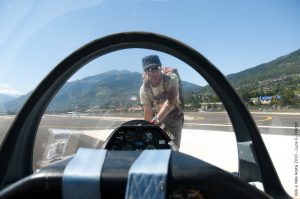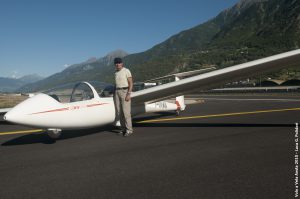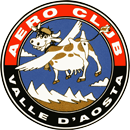The Aosta Valley is one of the best environments for those who want to learn gliding.
Watched over by a competent and patient instructor, pupils will encounter almost all possible conditions, from thermals to dynamic ridge flight and even spectacular wave soaring.
Having trained at the Aosta school, future pilots will be well-prepared to face even the most challenging flying situations.
Gliding is suitable for anyone over sixteen years old and in good health. This message applies to all ages, and especially to young people who love flying and would so love to seek out the silent updraughts that send the glider soaring over woods, close to rocky walls, over snow-capped peaks, and through countless other spaces.
EASA REQUIREMENTS
16 years
medical examination
Theoretical course
15 hours of flight
Including at least 10 with instructor
Including at least 2 solo
At least 45 towing
At least 1 100 km cross country (if with instructor on board) or 50 km (if solo)
HOW THE COURSE WORKS
The course is divided into a practical flying phase and several theory classes held in our pilots’ room.
During the course, glider pilots must develop good piloting skills and also build up significant theoretical expertise. The classes cover topics in aeronautics, meteorology, aeronautical regulations, navigation, telephony, etc.
The minimum age for the piloting course is 16, and all entrants must pass a “fit to fly” check-up held at the Italian Air Force Institute of Forensic Medicine at Milan Linate airport.
Once you have passed the check-up, you are ready to climb into the two-seater ASK 21 glider for the first time and begin the practical course with your instructor.
The instructor sits in the rear seat with the pupil in the front seat, the “official” pilot’s seat. Assisted by the instructor, the pupil can therefore begin flying immediately and safely.
Our instructors are experienced and qualified pilots.


The practical flying course is divided into two phases:
- • a basic section in which the pupil learns the fundamental handling manoeuvres of the aircraft: tow-assisted takeoff, turns, landings;
- • a second section in which we also tackle some manoeuvres for unusual attitudes such as stall, spin and spiral dives.
After the first phase of dual-control flight and at the instructor’s discretion, the pupil is allowed to fly solo for the first time.
The first solo flight is always a very intense moment and is a cause for celebration for both the school and its pupils. After the period set out by the current regulations (EASA and ENAC), the apprentice pilot is ready for the final exam.

 Italiano
Italiano English
English Deutsch
Deutsch Español
Español